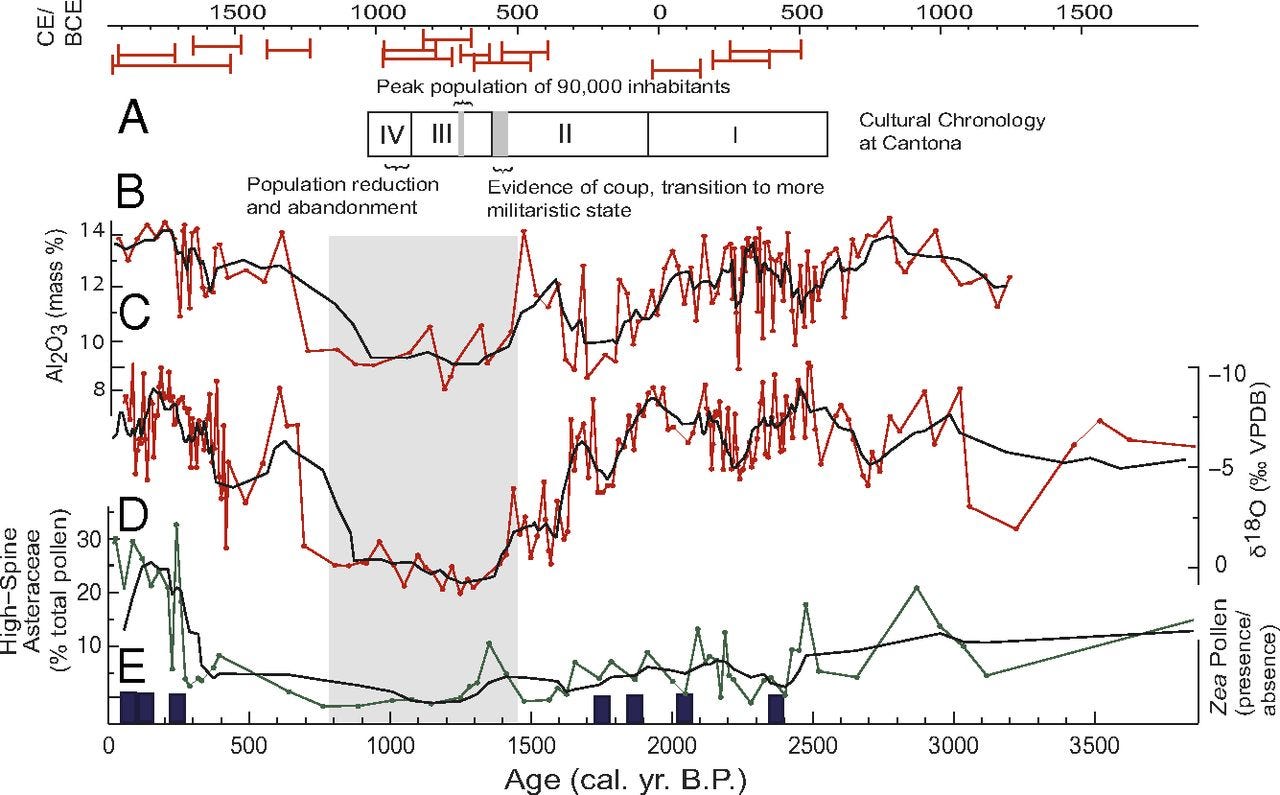Forgotten Extremes: The Megadroughts the IPCC Ignores
How Natural Climate Extremes Are Conveniently Omitted by Climate Alarmists
Every heatwave, drought, or wildfire today instantly generates alarming headlines blaming human-induced climate change, complete with apocalyptic warnings about supposedly "unprecedented" events. Take, for instance, recent headlines like BBC's alarming narrative about heatwaves, drought, and wildfires, explicitly linking these natural phenomena to modern industrial activity. But what happens when we dare to look deeper into the historical record?
What emerges from such scrutiny is a starkly different story. Virtually every extreme climate event labeled as evidence of catastrophic human influence today has occurred naturally in the past—often with greater severity.
The Forgotten Megadroughts of Ancient Mexico
Consider the meticulously documented case of Cantona, a major pre-Columbian city in Mexico. As detailed in a robust scientific study by Bhattacharya et al. (2015) in the Proceedings of the National Academy of Sciences, Cantona thrived from around 600 BCE to roughly 1050 CE, peaking at 90,000 inhabitants before dramatically collapsing. This abandonment coincided precisely with one of the region's longest and most intense droughts, lasting from approximately 500 CE to 1150 CE.
Using advanced geochemical methods, researchers analyzed lake sediment cores from the nearby Aljojuca Lake, employing stable oxygen isotopes (δ¹⁸O) and sediment aluminum concentrations to reconstruct past climate conditions. Their findings reveal an extended period of severe aridity lasting centuries, far more prolonged and severe than recent droughts blamed on human activity. Figure 2 from their study explicitly illustrates how peak drought coincided with Cantona’s abandonment, underlining the severity and persistence of this historic climate extreme.

Having used oxygen isotopes extensively myself, specifically analyzing the mineral zircon to reconstruct ancient magmatic conditions, I can attest firsthand to the reliability and robustness of such paleoclimatic reconstructions.
Modern Drought Narratives: Ignoring Historical Evidence
Yet, despite this clear historical record, modern droughts in Mexico are habitually attributed to anthropogenic climate change without a hint of historical perspective. For example,
Keep reading with a 7-day free trial
Subscribe to Irrational Fear to keep reading this post and get 7 days of free access to the full post archives.




